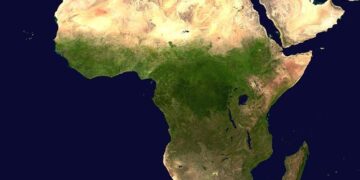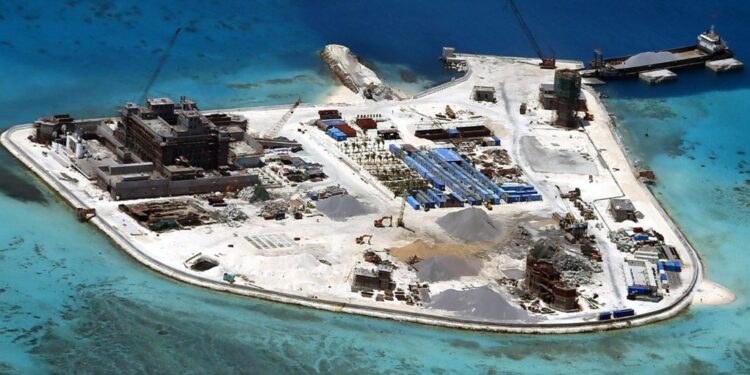Across China’s coastal waters, a pioneering island has emerged as a model for sustainable development, demonstrating how environmentally conscious policies can generate robust economic benefits. A recent report by Xinhua highlights how this Chinese island’s ocean-friendly initiatives are delivering dual gains-bolstering marine ecology while revitalizing local livelihoods. As nations worldwide grapple with balancing economic growth and environmental protection, the island’s innovative approach offers valuable insights into harmonizing human activity with ocean conservation.
Chinese Island’s Green Initiatives Foster Marine Biodiversity and Boost Local Livelihoods
On a picturesque island off China’s southeastern coast, a sweeping transformation is underway as locals adopt sustainable marine practices that enhance the delicate coastal ecosystem while invigorating the economy. Through rigorous efforts to reduce pollution and overfishing, the island has seen a remarkable resurgence in marine biodiversity. Innovative measures such as establishing protected marine zones, restoring coral reefs, and promoting eco-friendly aquaculture have created a thriving habitat for numerous marine species, from colorful reef fish to endangered sea turtles.
The environmental revitalization is coupled with tangible economic benefits for the island’s community. Fishermen have diversified into sustainable seafood farming and eco-tourism services, drawing an increasing number of visitors eager to experience the island’s pristine waters and vibrant marine life. These initiatives have led to higher incomes and stable employment opportunities, proving that ecological stewardship and economic development can progress hand-in-hand.
- Marine Protected Areas: Expanded by 30% over the last three years
- Coral Reef Restoration: Over 10,000 corals replanted since 2021
- Marine Species Diversity: Recorded 25% increase in native fish populations
- Eco-tourism Growth: Visitor numbers up 40% year-on-year
| Indicator | 2019 | 2023 |
|---|---|---|
| Annual Fish Catch (tons) | 800 | 620 (sustainable quota) |
| Seafood Farming Revenue (million RMB) | 5.4 | 9.1 |
| Number of Eco-tourists | 12,000 | 16,900 |
Community-Led Conservation Efforts Drive Sustainable Economic Development
Local communities on this Chinese island have taken decisive steps to safeguard the marine environment while simultaneously boosting economic opportunities. By integrating traditional knowledge with modern conservation techniques, fishermen and residents have embraced sustainable fishing practices that reduce overfishing and habitat destruction. This collaborative approach has fostered a sense of stewardship, encouraging residents to participate actively in restoring coral reefs and protecting endangered species. As a result, fish populations are rebounding, and marine biodiversity is improving, creating a healthier ecosystem that supports long-term livelihoods.
Key outcomes of these community-led efforts include:
- Increased fish catch yields due to replenished stocks
- Growth in eco-tourism, attracting visitors interested in marine conservation
- Development of local enterprises focused on sustainable seafood and handicrafts
- Strengthened partnerships between villagers, scientists, and government agencies
| Metric | Before Conservation | After Conservation |
|---|---|---|
| Annual Fish Catch (tons) | 450 | 720 |
| Eco-tourists per year | 1,200 | 3,500 |
| Local Employment in Fisheries | 150 | 260 |
Experts Urge Replication of Eco-Friendly Practices Across Coastal Regions
Marine ecologists and environmental economists alike emphasize the critical importance of scaling the island’s pioneering eco-initiatives to other coastal regions in China. The integrated approach-combining sustainable fishing practices, mangrove reforestation, and community-led marine conservation-has proven to rejuvenate aquatic biodiversity while simultaneously boosting local incomes. Experts note that this model presents a replicable framework capable of addressing complex ecological challenges without compromising economic development.
Key components identified for successful replication include:
- Community Engagement: Active participation and stewardship by local fishermen and residents.
- Innovative Sustainable Practices: Adoption of selective fishing gear and seasonal fishing restrictions.
- Habitat Restoration: Large-scale planting of native mangroves and seagrass beds to protect shorelines and provide fish nurseries.
- Government Support: Policy incentives and funding for pilot programs encouraging green technologies.
| Eco-Friendly Strategy | Benefit to Ecology | Benefit to Economy |
|---|---|---|
| Mangrove Reforestation | Improved coastal resilience | Enhanced fishery yields |
| Sustainable Fishing Gear | Reduced bycatch and habitat damage | Stable, long-term harvest levels |
| Community Management | Increased biodiversity | Higher income through eco-tourism |
| Policy Incentives | Encouragement of green innovation | Investment in sustainable infrastructure |
To Conclude
As China continues to prioritize sustainable development, the recent ocean-friendly initiatives on its island communities exemplify a promising pathway toward harmonizing environmental preservation with economic growth. The success seen in these efforts not only underscores the potential for replicable models across the nation’s coastal regions but also reinforces China’s commitment to safeguarding marine ecosystems while fostering prosperity for local populations. Moving forward, the dual gains achieved here serve as a compelling testament to the power of integrated ecological and economic strategies in addressing today’s environmental challenges.































